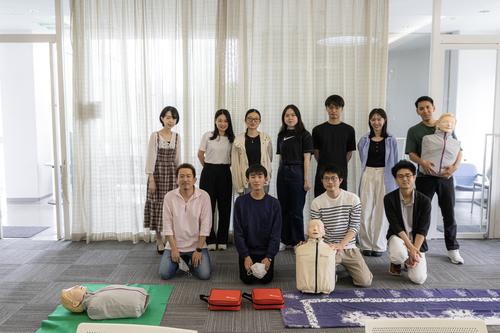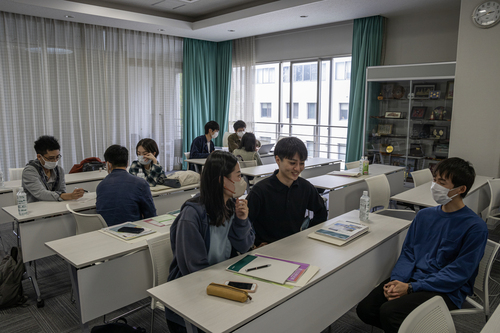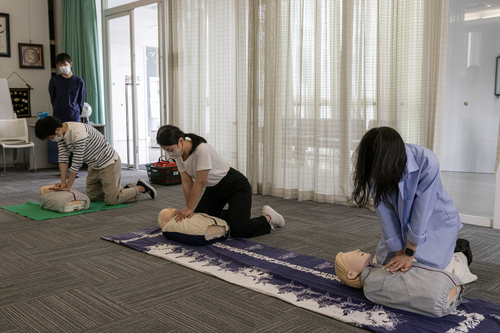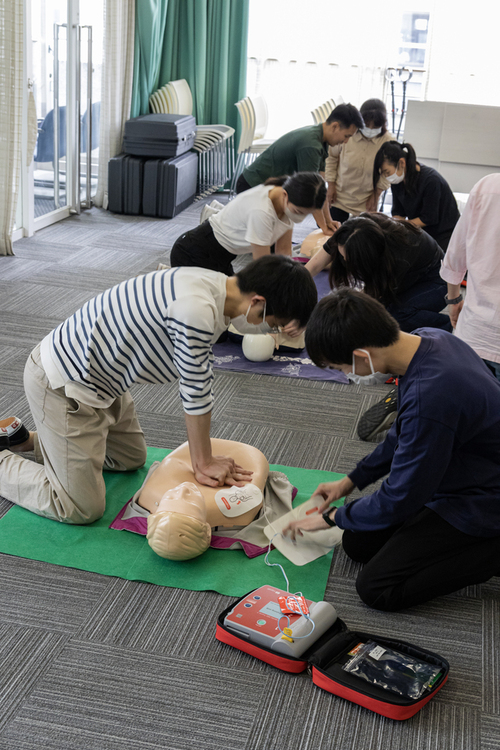Moving alone to another country to study can be a daunting prospect. The language barrier, municipal administration procedures, navigating the healthcare system, and culture shock are just a few challenges international students may face when arriving in a foreign country to attend university.
Nagoya University has a team of staff at the Global Engagement Center whose job is to support international students during their stay in Japan. However, these regular staff cannot be at the international students' side 24/7.
Here, resident assistants (RAs) come in. Nagoya University has several international residences, including International Ohmeikan, International Residence Yamate and International Residence Myoken around Higashiyama Campus, and International Residence Daiko on Daiko Campus. To help international students, both in adjusting to life in Japan and during their stay, volunteer Nagoya University students take on the role of RAs in the four residence facilities of Nagoya University. Resident assistants live alongside international students in the residences and are always available as a friendly face to provide help and support, and give advice.
This semester, I took part in two RA training sessions to understand how Nagoya University prepares its RAs to respond to issues that may arise in which international students require help. The sessions, organized by Global Engagement Center faculty members and staff, are both classroom-based and practical.
In April, the first month of the Japanese academic year, I attended the introductory training session, in which RAs learned how to respond to different non-emergency situations, how to work as a team to ensure that the residences run smoothly, and cultural sensitivity training. They were split into groups and asked to role-play several different scenarios that may arise during day-to-day life in the residences. They proposed practical solutions and then presented to the other attendees.
In June, I visited the training of the RAs again, this time observing their instruction in emergency response procedures if a student is taken ill or injured at a residence. Dr. Sakai from the GEC showed how to perform CPR and how to use an AED (Automated External Defibrillator) on an unresponsive patient. After that, the RAs tried it themselves. They also learned about how to handle an emergency environment, including giving explicit instructions to others on how to help, and the safe handling of injured patients.
RAs also learned how to help international students understand the emergency procedures in case of a fire or earthquake, and received instruction from an experts from the Disaster Mitigation Center on how to evacuate safely. Later this year, they will undergo further training, including additional Diversity, Equity and Inclusion (DEI) training, for example, on issues specific to our LGBTQ+ students.
Nagoya University aims to provide a safe, inclusive, helpful, and enjoyable learning environment for international students. Our RAs play a vital role in making that a reality.
 Links: Nagoya University Global Engagement Center
Links: Nagoya University Global Engagement Center



